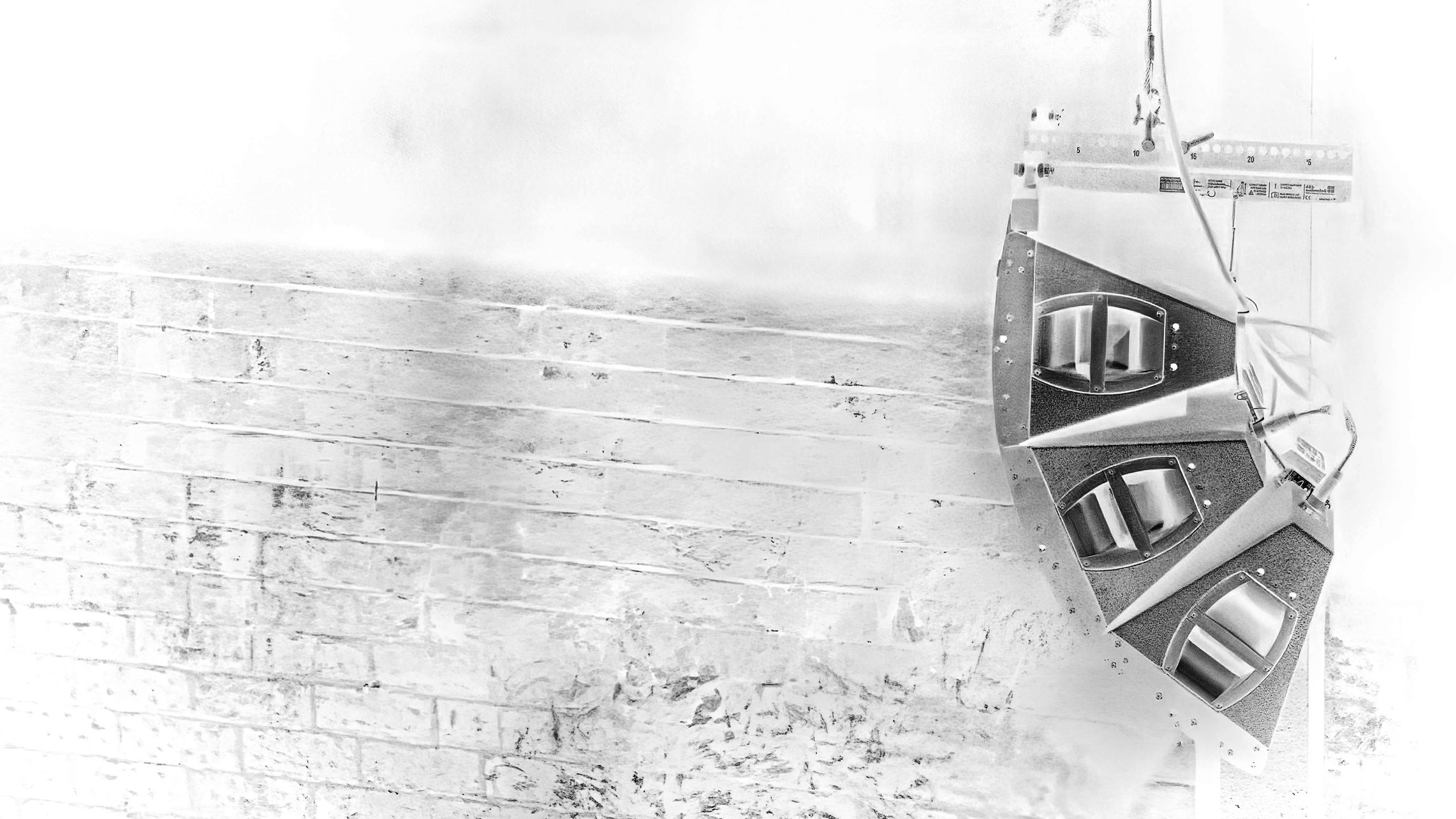THE PLAZA BALLROOM, REGENT THEATRE
By Richard Lawn, Pro AVL-Asia.
Richard Lawn reports from Melbourne’s opulent Plaza Ballroom, where Johnston Audio has installed a d&b audiotechnik A-Series system into the historic venue.
Having toured the world with leading artists over the years, audio maverick Bruce Johnston prefers to lend his expertise to venues closer to home these days. Since he started loading sound systems into pubs four decades ago, his knowledge of Melbourne’s theatres, concert halls and ballrooms has become ever more intimate. Today, Johnston – who formed Johnston Audio in 1985, merging the concert touring side with Jands Production Services in 2008 to form JPJ Audio, now part of the Clair Global Group, is in high demand to blow away the Covid cobwebs by enhancing venue flexibility.
When Mark Allan, technical director of the venue operator Marriner Group, requested Johnston to drop in for a chat about the Plaza Ballroom in 2022, he had more than an inkling as to what the venue required. “My long-term relationship with the owners started around 15 years ago when I was renting small, house loudspeaker systems to them,” comments Johnston. “We would have to remove a PA from their other venue, the Forum on Flinders Street, which was a dangerous and tricky venue to load in and out of. Therefore, I approached the management and asked if we could fix a permanent system into the ballroom and charge the acts that perform here to cover the costs.”
Perhaps Johnston should have asked for shares in the venue at that point as his idea was seized upon and the Plaza Ballroom has not looked back since. Initially, staging approximately 20 shows per year, the ballroom became one of the first pay-as-you-go house systems, before Johnston, in his own words, “took a leap of faith”, and convinced Marriner Group to install a house PA. It was a masterstroke as the venue now stages around 180 performances per year.
Discreetly located under the Regent’s Theatre on Collins Street, the Plaza Ballroom underwent an extensive refurbishment when it was taken over by Marriner Group in 1996. Built in 1929, the venue today appears grander than ever with emblazoned high ceilings, Spanish Rococo architecture, Juliet balconies, bespoke lighting and original chandeliers. Benefiting from a large open floorplan, it’s the perfect backdrop to complement events including grand gala dinners, weddings, awards nights, cocktail functions, lunches and presentations, with the capacity for up to 1,200 guests.
A temporary HK Audio Contour loudspeaker system had served the ballroom well for 10 years, but Allan realised the time had arrived to make a significant investment in a leading audio system. “The venue’s lead audio technician had done some research and Mark expressed a desire for a d&b audiotechnik loudspeaker system,” continues Johnston. “The Forum has a d&b system and JPJ has been using the brand for years.”
Johnston requested d&b audiotechnik distributor, NAS, to propose a system for the venue. “I realised that it would be more than just a normal L-R system for corporate gigs, so I had no hesitancy in requesting Shane Bailey and Dave Jacques from NAS to be involved. They offer a great service for an installer and reseller such as JPJ in system design and product knowledge as they have installed in many similar venues in Australia, and have a great track record for over 20 years. The service they offer is included in purchasing the equipment as a reseller, including the documentation paperwork, maintenance and expertise in addition to the PowerPoint presentation to the client. The combination forms a powerful proposal for a high-end client such as Marriner Group.”
Marriner Group requested multiple configurations of events including various stage setups around the venue, weddings with speeches in various locations and corporate events with different layouts. “Every eventuality and scenario were proposed,” adds Johnston. “The venue wanted to maximise venue flexibility and versatility for their clientele. They challenged us to create a concept for a room system whereby they could change the stage direction and at the same time quickly and easily accommodate the mics, lecterns and smaller stages for live, background and foreground music.”
As the project’s team leader, Jacques assumed the challenge of creating a system design based on these requirements. “It was never going to be a case of simply installing main left and right hangs with a couple of delay boxes,” he comments. “The venue desired a great deal of flexibility, but I was concerned that the additional work would probably take the project beyond budget. Having bounced some ideas around with Bruce, Marriner Group asked us to proceed and make sure that all the functions work.”
Unfamiliar with the type of events that were staged in the Plaza Ballroom, Jacques quickly got up to speed. “The venue can be hired for a multitude of events on any given day, so changes need to be made quickly if the business is to succeed,” continues Jacques. “It was our goal to design a flexible and easy-to-use audio system that would save the operators valuable time and deliver exceptional results.”
A two-fold loudspeaker design resulted - firstly, a traditional L-R FOH system to address the listeners from the main stage area. Suspended on flying frames from the existing rigging points, a single ALi60 and three ALi90 d&b audiotechnik A-Series cabinets make up each hang. Because low-frequency transmission was of great concern to the theatre above, acoustic mounts have been added to the arrays to isolate any sound leaking through the ceiling. Located under the stage, four V-GSUB cardioid subwoofers are arranged in a horizontal array, while four 40D amplifiers provide multichannel power to the 12 enclosures with a dedicated channel per enclosure.
Delays were required in the form of d&b audiotechnik xS models. The undercrofts of the ornate Juliet balconies benefit from 5S wall-mounted enclosures, while 8S speakers have been fixed to the main ceiling in the rear undercroft on brackets and a pair of Yi7P speakers have been added as delays part way down the venue.
A secondary flexible distributed ceiling system using d&b E8 loudspeakers allows the venue to set up multiple sources in various locations within the space for traditional lecturn, BGM or speech reinforcement work. A pair of pole-mounted Y10P loudspeakers can be used as a portable system for patching into the various smaller stage locations. This portable system then provides energy and focus to the desired performance areas and via the matrix coverage with level and delay to each speaker to maintain the correct focus. With patch panels around the venue, small acoustic stages, a dancefloor, a piano with a vocal or a lectern can be easily integrated simultaneously in any position. Maximising flexibility with system time alignment, each speaker in the system is powered by a dedicated d&b amplifier channel with a DS100 matrix output. The larger 40D amplifiers power the main array speakers and subwoofers, and the ceiling and fill speakers are powered by the compact 5D four-channel amplifiers. This combination of individual amplifier channels and matrix processing allows operators to use multiple performance locations around the venue simultaneously without compromising localisation.
“In addition to installing the optimum loudspeaker infrastructure where required, a DS100 signal engine was central in providing venue flexibility,” explains Jacques. “With a significant amount of inputs entering the matrix processor, d&b’s ArrayCalc simulation software was used to ensure coverage and performance for all configurations. For the initial acoustic design, we took all the venue measurements and built a 3D model. Using that as our basis, we positioned all loudspeakers for the various scenarios that we were planning to use and then modelled the performance in the space, including setting levels and delay times for various scenarios as snapshots.”
All audio inputs from the console are routed to various loudspeakers via the DS100 matrix with independent level and delay at each matrix crosspoint. Rather than having to switch presets to adjust settings in the room, the operator simply patches the audio to the desired DS100 input based on the location. The DS100 does the rest and sets levels and delay for all loudspeakers to deliver the desired coverage and localisation for that source. “Programming took several days as each input source had to be correctly adjusted with level outputs assigned to the relevant loudspeakers,” furthers Jacques. “The combined traditional L-R main and fill speaker systems together with the more traditional ceiling distributed design covering the entire floorspace from directly above is quite extensive.”
To complicate matters further, the roof measures 2m higher over the stage than at the rear of the room. Having incorporated all the measurements into the settings, the loudspeakers were then digitally levelled. “Getting the timing and the spacing correct is key to obtaining good intelligibility, so we intentionally reduced the overlap between the speakers in some zones and adjusted delay to compensate for speaker height variation. d&b 5S and 8S fill speakers in the undercroft zones are also individually timed for each source position. To programme the matrix settings, each matrix input was calculated, tuned and measured for all loudspeakers. Today, the technicians can recall the base settings for their daily setup and can further configure and adjust settings to obtain the desired coverage if needed.”
The d&b software controls the loudspeakers across the entire space. “Having strong directivity control of the entire speaker system was crucial, with a tight pattern designed not to excite the ceiling space and maintain tonality,” explains Jacques. “With d&b array processing applied to the A-Series, almost no energy bleeds behind or above, and coverage of the main arrays can be adjusted electronically to suit the individual needs of each event. In addition, the cardioid subwoofers and horizontal positioning steers the low-frequency coverage towards the rear of the room. By controlling the coverage and SPL, not only have the bands that play here regularly commented on how little bass remains onstage but significant reductions in levels transferred to the venue upstairs have been observed.”
Following commissioning and one-to-one training with the in-house technicians, Jacques’ mission at the Plaza Ballroom was complete. “By integrating the design into a real-world system using our control interface, the technicians can turn the system on, reset it to default, monitor and easily adjust settings if required. An extensive set of controls are available at their disposal, but it can be locked down according to the user status. Should a technician be arriving to set up and discover that the previous operator had done something strange, the entire system matrix, loudspeakers, amps and processing can be recalled back to a starting point with one button click.”
When Johnston requested the upgrade budget from Marriner Group, Allan instructed starting with the best and working down. “Dave and I initially looked to reduce the number of loudspeakers without compromising the quality,” he recalls. “Fortunately, the venue saved a lot of the budget by installing all the cabling themselves through the roofs and floors in between performances. This included lots of Category and other cabling for possible futureproofing scenarios. We reduced the original monitor system, because the venue only requires four loudspeaker outputs in each of the various locations where the performances take place. As such, four compact d&b M6 speakers for monitors were required.”
As Oasis’s front of house engineer for over a decade, Johnston fully comprehends “the show must go on” philosophy. The capacity of the Plaza Ballroom may not be a sellout audience at Wembley Stadium, but one bad night can tarnish a venue’s reputation immeasurably. Since convincing the ballroom to invest in its own loudspeaker system, Johnston – with a little help from his friends at NAS Solutions – has continued to play a key role in raising its profile over the past two decades. With Wonderwall echoing out towards the end of the interview, perhaps Marriner Group will be tempted to rename their 1929 hidden gem “wonder hall”.
Further information on the full range of d&b audiotechnik products can be found here.
www.johnstonaudio.com
PLAZA BALLROOM, REGENT THEATRE
191 Collins Street, Melbourne, VIC
www.plazaballroom.com.au
FEATURED PRODUCTS
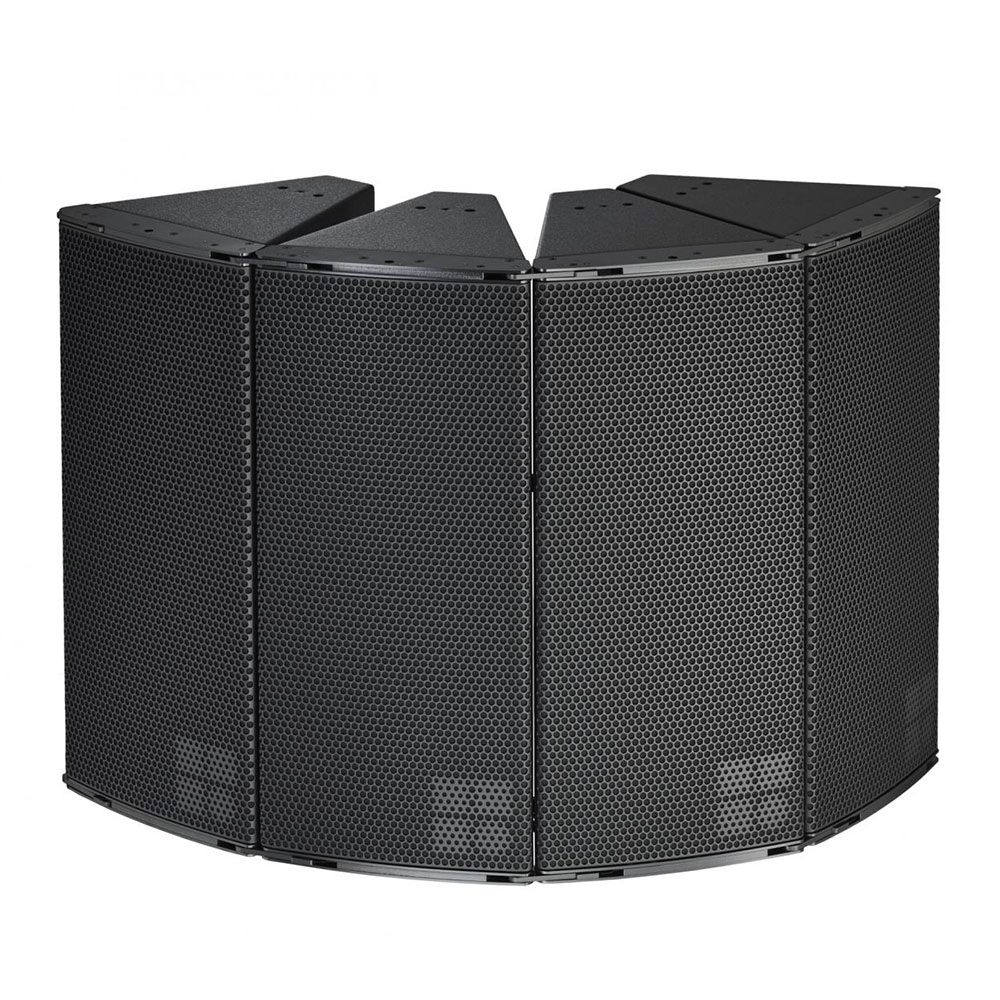
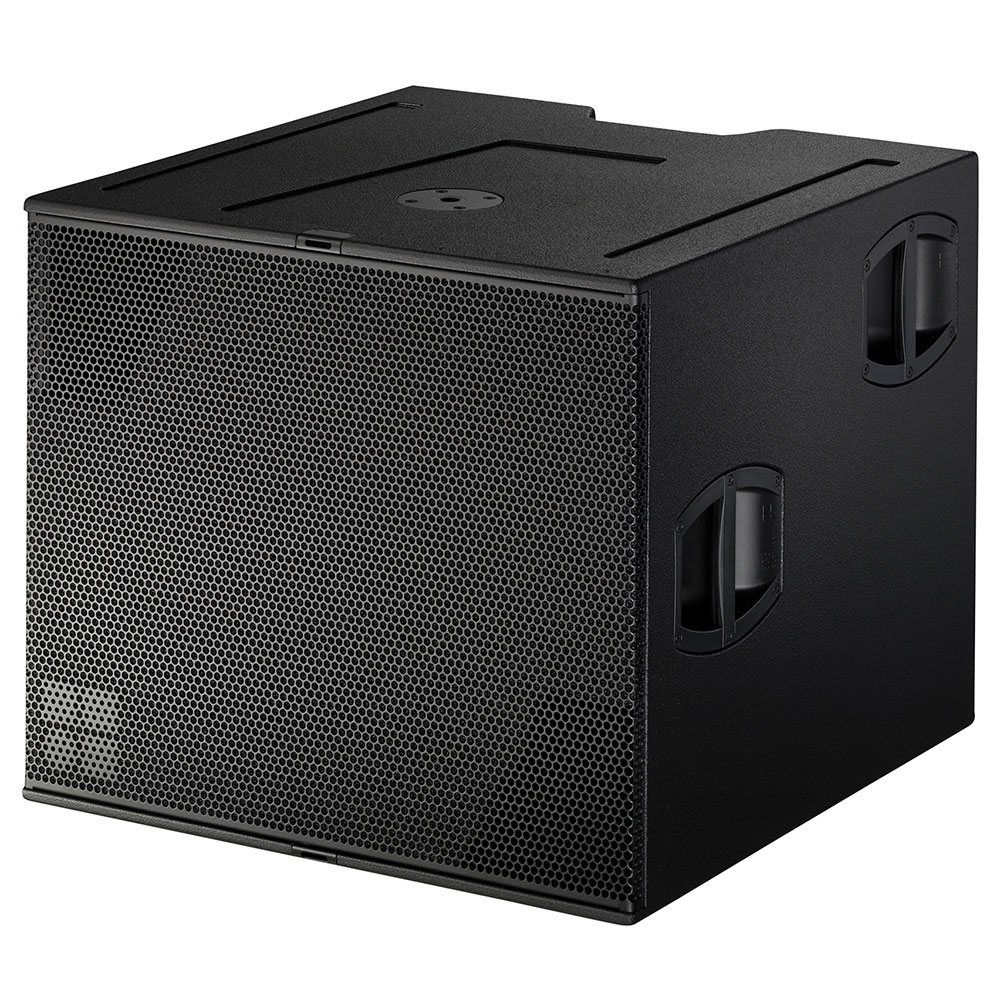
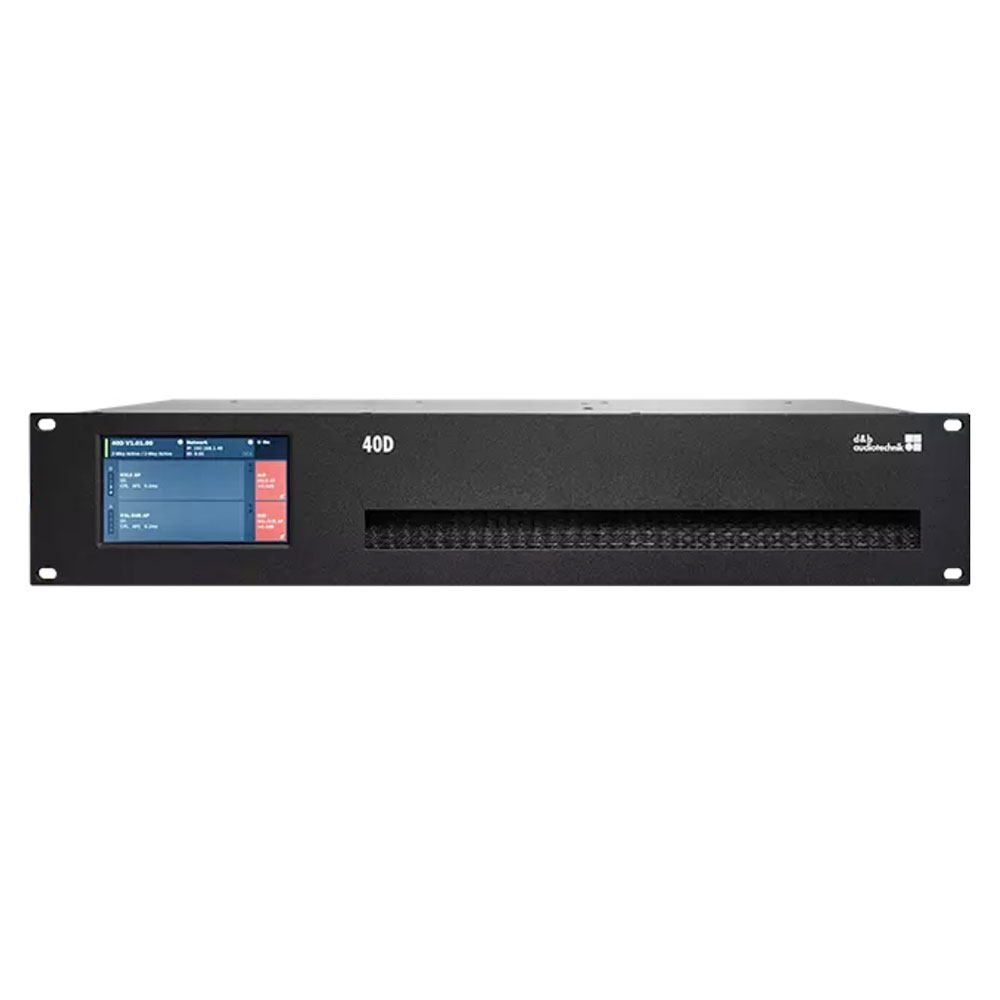
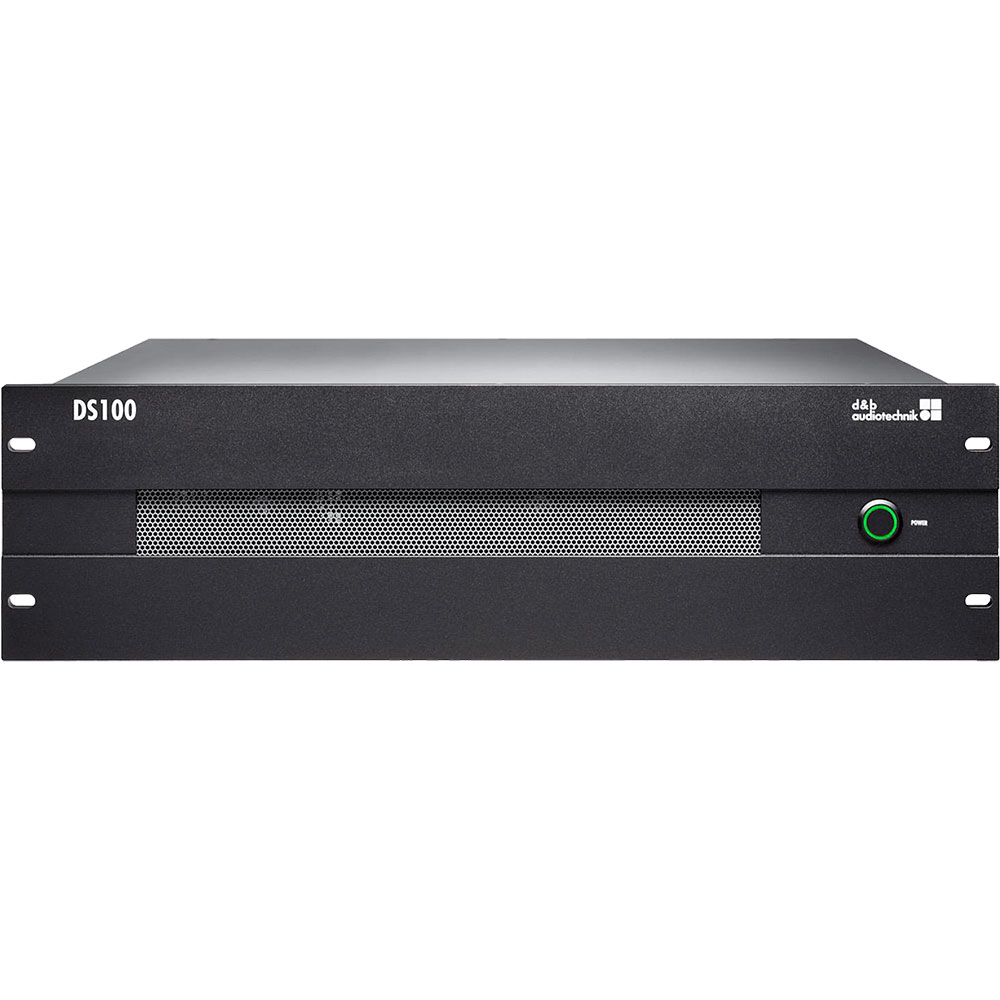
MORE CASE STUDIES
THE PLAZA BALLROOM, REGENT THEATRE
FEATURED PRODUCTS




By Richard Lawn, Pro AVL-Asia.
Richard Lawn reports from Melbourne’s opulent Plaza Ballroom, where Johnston Audio has installed a d&b audiotechnik A-Series system into the historic venue.
Having toured the world with leading artists over the years, audio maverick Bruce Johnston prefers to lend his expertise to venues closer to home these days. Since he started loading sound systems into pubs four decades ago, his knowledge of Melbourne’s theatres, concert halls and ballrooms has become ever more intimate. Today, Johnston – who formed Johnston Audio in 1985, merging the concert touring side with Jands Production Services in 2008 to form JPJ Audio, now part of the Clair Global Group, is in high demand to blow away the Covid cobwebs by enhancing venue flexibility.
When Mark Allan, technical director of the venue operator Marriner Group, requested Johnston to drop in for a chat about the Plaza Ballroom in 2022, he had more than an inkling as to what the venue required. “My long-term relationship with the owners started around 15 years ago when I was renting small, house loudspeaker systems to them,” comments Johnston. “We would have to remove a PA from their other venue, the Forum on Flinders Street, which was a dangerous and tricky venue to load in and out of. Therefore, I approached the management and asked if we could fix a permanent system into the ballroom and charge the acts that perform here to cover the costs.”
Perhaps Johnston should have asked for shares in the venue at that point as his idea was seized upon and the Plaza Ballroom has not looked back since. Initially, staging approximately 20 shows per year, the ballroom became one of the first pay-as-you-go house systems, before Johnston, in his own words, “took a leap of faith”, and convinced Marriner Group to install a house PA. It was a masterstroke as the venue now stages around 180 performances per year.
Discreetly located under the Regent’s Theatre on Collins Street, the Plaza Ballroom underwent an extensive refurbishment when it was taken over by Marriner Group in 1996. Built in 1929, the venue today appears grander than ever with emblazoned high ceilings, Spanish Rococo architecture, Juliet balconies, bespoke lighting and original chandeliers. Benefiting from a large open floorplan, it’s the perfect backdrop to complement events including grand gala dinners, weddings, awards nights, cocktail functions, lunches and presentations, with the capacity for up to 1,200 guests.
A temporary HK Audio Contour loudspeaker system had served the ballroom well for 10 years, but Allan realised the time had arrived to make a significant investment in a leading audio system. “The venue’s lead audio technician had done some research and Mark expressed a desire for a d&b audiotechnik loudspeaker system,” continues Johnston. “The Forum has a d&b system and JPJ has been using the brand for years.”
Johnston requested d&b audiotechnik distributor, NAS, to propose a system for the venue. “I realised that it would be more than just a normal L-R system for corporate gigs, so I had no hesitancy in requesting Shane Bailey and Dave Jacques from NAS to be involved. They offer a great service for an installer and reseller such as JPJ in system design and product knowledge as they have installed in many similar venues in Australia, and have a great track record for over 20 years. The service they offer is included in purchasing the equipment as a reseller, including the documentation paperwork, maintenance and expertise in addition to the PowerPoint presentation to the client. The combination forms a powerful proposal for a high-end client such as Marriner Group.”
Marriner Group requested multiple configurations of events including various stage setups around the venue, weddings with speeches in various locations and corporate events with different layouts. “Every eventuality and scenario were proposed,” adds Johnston. “The venue wanted to maximise venue flexibility and versatility for their clientele. They challenged us to create a concept for a room system whereby they could change the stage direction and at the same time quickly and easily accommodate the mics, lecterns and smaller stages for live, background and foreground music.”
As the project’s team leader, Jacques assumed the challenge of creating a system design based on these requirements. “It was never going to be a case of simply installing main left and right hangs with a couple of delay boxes,” he comments. “The venue desired a great deal of flexibility, but I was concerned that the additional work would probably take the project beyond budget. Having bounced some ideas around with Bruce, Marriner Group asked us to proceed and make sure that all the functions work.”
Unfamiliar with the type of events that were staged in the Plaza Ballroom, Jacques quickly got up to speed. “The venue can be hired for a multitude of events on any given day, so changes need to be made quickly if the business is to succeed,” continues Jacques. “It was our goal to design a flexible and easy-to-use audio system that would save the operators valuable time and deliver exceptional results.”
A two-fold loudspeaker design resulted - firstly, a traditional L-R FOH system to address the listeners from the main stage area. Suspended on flying frames from the existing rigging points, a single ALi60 and three ALi90 d&b audiotechnik A-Series cabinets make up each hang. Because low-frequency transmission was of great concern to the theatre above, acoustic mounts have been added to the arrays to isolate any sound leaking through the ceiling. Located under the stage, four V-GSUB cardioid subwoofers are arranged in a horizontal array, while four 40D amplifiers provide multichannel power to the 12 enclosures with a dedicated channel per enclosure.
Delays were required in the form of d&b audiotechnik xS models. The undercrofts of the ornate Juliet balconies benefit from 5S wall-mounted enclosures, while 8S speakers have been fixed to the main ceiling in the rear undercroft on brackets and a pair of Yi7P speakers have been added as delays part way down the venue.
A secondary flexible distributed ceiling system using d&b E8 loudspeakers allows the venue to set up multiple sources in various locations within the space for traditional lecturn, BGM or speech reinforcement work. A pair of pole-mounted Y10P loudspeakers can be used as a portable system for patching into the various smaller stage locations. This portable system then provides energy and focus to the desired performance areas and via the matrix coverage with level and delay to each speaker to maintain the correct focus. With patch panels around the venue, small acoustic stages, a dancefloor, a piano with a vocal or a lectern can be easily integrated simultaneously in any position. Maximising flexibility with system time alignment, each speaker in the system is powered by a dedicated d&b amplifier channel with a DS100 matrix output. The larger 40D amplifiers power the main array speakers and subwoofers, and the ceiling and fill speakers are powered by the compact 5D four-channel amplifiers. This combination of individual amplifier channels and matrix processing allows operators to use multiple performance locations around the venue simultaneously without compromising localisation.
“In addition to installing the optimum loudspeaker infrastructure where required, a DS100 signal engine was central in providing venue flexibility,” explains Jacques. “With a significant amount of inputs entering the matrix processor, d&b’s ArrayCalc simulation software was used to ensure coverage and performance for all configurations. For the initial acoustic design, we took all the venue measurements and built a 3D model. Using that as our basis, we positioned all loudspeakers for the various scenarios that we were planning to use and then modelled the performance in the space, including setting levels and delay times for various scenarios as snapshots.”
All audio inputs from the console are routed to various loudspeakers via the DS100 matrix with independent level and delay at each matrix crosspoint. Rather than having to switch presets to adjust settings in the room, the operator simply patches the audio to the desired DS100 input based on the location. The DS100 does the rest and sets levels and delay for all loudspeakers to deliver the desired coverage and localisation for that source. “Programming took several days as each input source had to be correctly adjusted with level outputs assigned to the relevant loudspeakers,” furthers Jacques. “The combined traditional L-R main and fill speaker systems together with the more traditional ceiling distributed design covering the entire floorspace from directly above is quite extensive.”
To complicate matters further, the roof measures 2m higher over the stage than at the rear of the room. Having incorporated all the measurements into the settings, the loudspeakers were then digitally levelled. “Getting the timing and the spacing correct is key to obtaining good intelligibility, so we intentionally reduced the overlap between the speakers in some zones and adjusted delay to compensate for speaker height variation. d&b 5S and 8S fill speakers in the undercroft zones are also individually timed for each source position. To programme the matrix settings, each matrix input was calculated, tuned and measured for all loudspeakers. Today, the technicians can recall the base settings for their daily setup and can further configure and adjust settings to obtain the desired coverage if needed.”
The d&b software controls the loudspeakers across the entire space. “Having strong directivity control of the entire speaker system was crucial, with a tight pattern designed not to excite the ceiling space and maintain tonality,” explains Jacques. “With d&b array processing applied to the A-Series, almost no energy bleeds behind or above, and coverage of the main arrays can be adjusted electronically to suit the individual needs of each event. In addition, the cardioid subwoofers and horizontal positioning steers the low-frequency coverage towards the rear of the room. By controlling the coverage and SPL, not only have the bands that play here regularly commented on how little bass remains onstage but significant reductions in levels transferred to the venue upstairs have been observed.”
Following commissioning and one-to-one training with the in-house technicians, Jacques’ mission at the Plaza Ballroom was complete. “By integrating the design into a real-world system using our control interface, the technicians can turn the system on, reset it to default, monitor and easily adjust settings if required. An extensive set of controls are available at their disposal, but it can be locked down according to the user status. Should a technician be arriving to set up and discover that the previous operator had done something strange, the entire system matrix, loudspeakers, amps and processing can be recalled back to a starting point with one button click.”
When Johnston requested the upgrade budget from Marriner Group, Allan instructed starting with the best and working down. “Dave and I initially looked to reduce the number of loudspeakers without compromising the quality,” he recalls. “Fortunately, the venue saved a lot of the budget by installing all the cabling themselves through the roofs and floors in between performances. This included lots of Category and other cabling for possible futureproofing scenarios. We reduced the original monitor system, because the venue only requires four loudspeaker outputs in each of the various locations where the performances take place. As such, four compact d&b M6 speakers for monitors were required.”
As Oasis’s front of house engineer for over a decade, Johnston fully comprehends “the show must go on” philosophy. The capacity of the Plaza Ballroom may not be a sellout audience at Wembley Stadium, but one bad night can tarnish a venue’s reputation immeasurably. Since convincing the ballroom to invest in its own loudspeaker system, Johnston – with a little help from his friends at NAS – has continued to play a key role in raising its profile over the past two decades. With Wonderwall echoing out towards the end of the interview, perhaps Marriner Group will be tempted to rename their 1929 hidden gem “wonder hall”.

